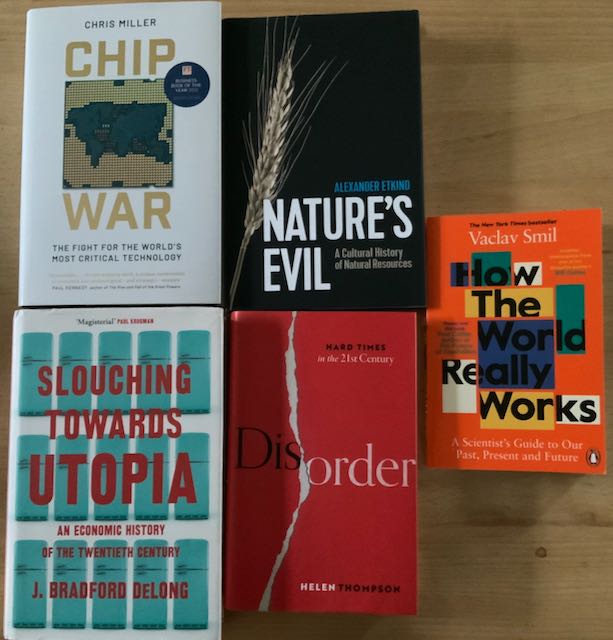Last Wednesday the Science Minister, George Freeman MP, gave a wide ranging speech with this title, on the current state of UK science policy at the think-tank Onward. A video of the speech can be watched on YouTube here. As a response to the speech, there was a panel discussion the following day, featuring Prof Sir John Bell, Lord David Willetts, James Phillips, Tabitha Goldstaub, Priya Guha and and myself, chaired by Onward’s Adam Hawksbee. This is also available to watch on YouTube. This, more or less, is what I said in my opening statement.
Hello. I’m Richard Jones, talking to you from Oldham Town Hall – which I think is very on-brand for Onward, and indeed for myself…
I want to start where the Minister finished – what are we talking about, when we talk about being a “Science Superpower”? This is part of that broader question of how the UK finds its place in the world.
The UK represents a little less than 3% of the world’s high tech economy. It’s not the USA, it’s not China. But the UK does have a real potential competitive advantage in the strength of its science base – it is genuinely outperforming, at least (and this qualification is important) when it is judged on purely academic metrics.
The challenge – and this is the “Innovation Nation” aspect that the Minister stresses – is applying that science strength to the critical issues the UK – and the world – faces. These challenges include:
- The UK’s more than a decade long stagnation in productivity growth;
- The wrenching economic transition we face to achieve a net zero energy economy;
- Ensuring good health outcomes for our citizens;
- National security in an increasingly dangerous world.
To begin with productivity, it can’t be stressed too much how the stagnation of productivity growth after 2008 underlies pretty much all the difficulties the country faces – stagnant wages, the persistent fiscal deficit, the difficulties we’re seeing in funding public services to the standard people expect
As the Minister said, to get economic growth back we need to be accelerating progress in high tech sectors
But there’s a paradox here – the economist Diane Coyle, from the Productivity Institute, has analysed the productivity slowdown, and finds the biggest contributors to the slowdown are precisely those high-tech sectors that we think should be our strength. [Source: Coyle & Mei, Diagnosing the UK Productivity Slowdown: Which Sectors Matter and Why?]
In Pharmaceuticals, productivity growth was 0.6% a year on average between 1998 and 2008. But between 2009-2019 pharma industry productivity actually fell, by 0.2% a year on average.
So, we need to do things differently.
Money is important, and the government’s spending uplift is real, significant in scale, and to be welcomed.
I welcome ARIA as a chance to try and experiment with different funding mechanisms.
But from the perspective of Oldham, the biggest and most welcome change the minister talked about was the new focus on place and clusters across the UK
The UK is two nations – a high performing Northern European economy in the Greater Southeast. And beyond, in the North, The Midlands, Wales – we have places with economies comparable to southern Italy or Portugal. Our big cities – like Birmingham, Greater Manchester and Glasgow – have productivity below the UK average. This isn’t normal – in most developed countries, its the big cities that drive the national economy. Why can’t Manchester be more like Munich, a similar size city, that’s one of Germany’s innovation hubs? If it was, it would generate about £40 billion a year more value for the UK.
This is a huge waste of potential. We need to identify nascent clusters, and work with those places to build up their innovation capacity, build industrial R&D, attract in investment from outside, and give people in places like Oldham the opportunity that the Minister talks about to take part in this high tech economy.
But money isn’t everything. For example, we do health research to support the health of our citizens as well as to create economic value. The Oxford vaccine was a brilliant example of this.
But even pre-pandemic, a man born in Oldham 2016-2018 could expect to live in good health for 58 years. For a man in Oxfordshire, healthy life expectancy was 68.3 years! [Source: Health state life expectancy at birth and at age 65 years by local areas, UK, ONS.]
Ten lost years for Oldhamites! The human cost of those years of ill-health and premature death is huge. But so is the economic cost – this ill-health is a major contributor to the productivity gap in Oldham and places like it, all across the UK
That’s something R&D should do something about – this truly would be “innovation for the nation”.
We have to do things differently. We need to apply our science to address the big strategic problems the UK faces, and we need that to be an effort that the whole nation takes part in – and benefits from.
None of this should take away from the power of great research centres like Cambridge and Oxford – that really is a supercluster, a massive asset for the nation.
The question is, how can we build on that and spread the benefits across the rest of the country? There are plenty of great spin-outs from Cambridge and Oxford. We need them to scale-up in the UK, and not feel they have to move to Germany, or California, to succeed. So why shouldn’t their first factory be in Rochdale or Rotherham, or Dudley or Stoke-on-Trent?
So yes, let’s aspire to be an innovation nation, but to build that, we need innovation cities and innovation regions all across the UK.
For (much) more on this, see my Productivity Institute paper Science and innovation policy for hard times: an overview of the UK’s Research and Development landscape.
